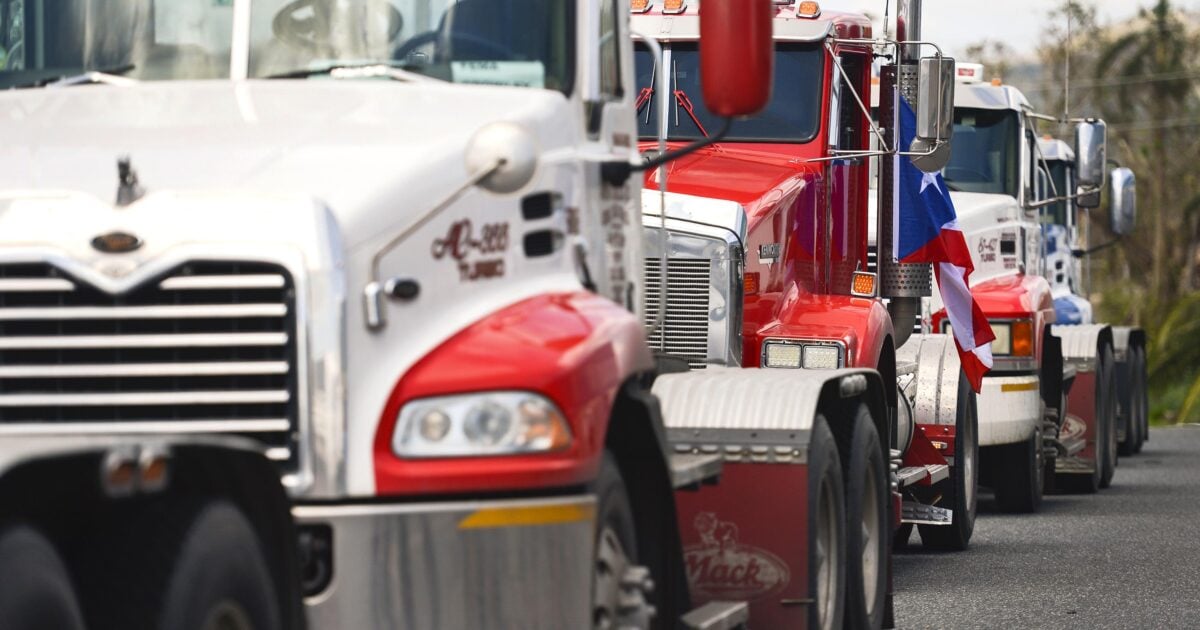

In what is being touted as the most aggressive move yet against transportation sector emissions, the Biden regime unveiled a sweeping set of emissions standards for heavy-duty vehicles on Friday.
The new rule, issued by the Environmental Protection Agency (EPA), enforces progressively tighter restrictions on a broad range of heavy-duty vehicles, including everything from city buses to interstate freight haulers, starting with the model year 2027 and extending through 2032.
“I’m so proud to announce that EPA is finalizing the strongest national greenhouse gas standards for heavy-duty vehicles in history,” said Environmental Protection Agency administrator Michael Regan.
“In finalizing these emissions standards for heavy-duty vehicles like trucks and buses, EPA is significantly cutting pollution from the hardest-working vehicles on the road,” Regan added.
“Building on our recently finalized rule for light- and medium-duty vehicles, EPA’s strong and durable vehicle standards respond to the urgency of the climate crisis by making deep cuts in emissions from the transportation sector.”
EPA released the following announcement:
On March 29, 2024, the U.S. Environmental Protection Agency (EPA) announced a final rule, “Greenhouse Gas Emissions Standards for Heavy-Duty Vehicles – Phase 3,” that sets stronger standards to reduce greenhouse gas emissions from heavy-duty (HD) vehicles beginning in model year (MY) 2027. The new standards will be applicable to HD vocational vehicles (such as delivery trucks, refuse haulers, public utility trucks, transit, shuttle, school buses, etc.) and tractors (such as day cabs and sleeper cabs on tractor-trailer trucks).
The final “Phase 3” standards build on EPA’s Heavy-Duty Phase 2 program from 2016 and maintain that program’s flexible structure, which is designed to reflect the diverse nature of the heavy-duty vehicle industry. The standards are technology-neutral and performance-based, allowing each manufacturer to choose what set of emissions control technologies is best suited for them and the needs of their customers.
Key stakeholders in the trucking industry, such as Trucking.org have voiced significant concerns. According to the American Trucking Associations (ATA), the newly announced emission standards set unachievable targets that could undermine the efficiency of the U.S. supply chain and freight movement.
ATA President and CEO Chris Spear criticized the rule for its overly ambitious post-2030 targets.
Trucking.org released the following statement:
The trucking industry says new emission standards for heavy-duty trucks announced today by the Biden Administration have unachievable targets and will carry real consequences for the U.S. supply chain and movement of freight throughout the economy.
“ATA opposes this rule in its current form because the post-2030 targets remain entirely unachievable given the current state of zero-emission technology, the lack of charging infrastructure and restrictions on the power grid,” said ATA President and CEO Chris Spear. “Given the wide range of operations required of our industry to keep the economy running, a successful emission regulation must be technology neutral and cannot be one-size-fits-all. Any regulation that fails to account for the operational realities of trucking will set the industry and America’s supply chain up for failure.”
While EPA’s final rule includes lower zero-emission vehicle rates for model years 2027-2029, ATA says forced zero-emission vehicle penetration rates in the later years will drive only battery-electric and hydrogen investment, limiting fleets’ choices with early-stage technology that is still unproven.
“The trucking industry is fully committed to the road to zero emissions, but the path to get there must be paved with commonsense,” Spear said. “While we are disappointed with today’s rule, we will continue to work with EPA to address its shortcomings and advance emission-reduction targets and timelines that are both realistic and durable.”
A recent study commissioned by the Clean Freight Coalition highlighted the significant infrastructure investment needs to electrify the nation’s medium- and heavy-duty vehicle fleet, and a recent report from the American Transportation Research Institute identified the many challenges facing commercial-vehicle electrification in the areas of U.S. electricity supply and demand, electric vehicle production and truck charging requirements.
This action echoes last week’s stringent measures for new passenger vehicles and light trucks.
CBS reported:
The Biden administration announced new tailpipe emission standards for new passenger cars that aim to cut over 7 billion tons of carbon emissions, as well as other harmful air pollutants.
The standards will apply to new passenger cars and light-duty trucks, beginning with model year 2027 through 2032.
The Environmental Protection Agency, in announcing the tougher standards, said the reduction of carbon emissions and other harmful air pollutants will help prevent premature deaths and reduce heart attacks, respiratory and cardiovascular illness, as well as asthma.
“Three years ago, I set an ambitious target: that half of all new cars and trucks sold in 2030 would be zero-emission,” said President Biden in a statement. “Today, we’re setting new pollution standards for cars and trucks.”
However, the new standards also ease a draft rule by the EPA that would have required car companies to rely on all-electric vehicles as the sole solution to meet pollution targets. After months of talks with the auto industry and its workers, the EPA shifted to a strategy that would include a range of vehicles, including plug-in hybrid, hybrid and advanced gasoline vehicles to reach emission goals.
The post Trucking Industry Slams Biden Regime Over Stringent New Regulations for Heavy-Duty Vehicles to Combat Climate Change appeared first on The Gateway Pundit.
